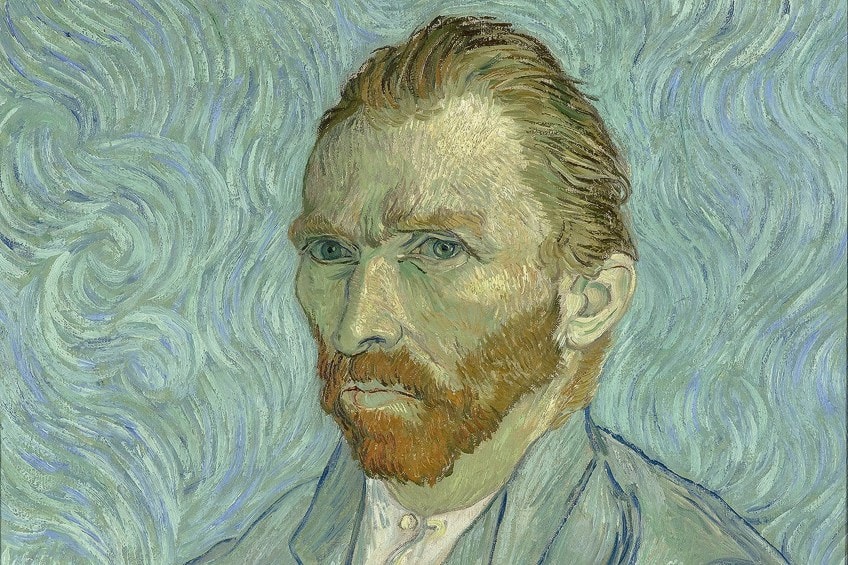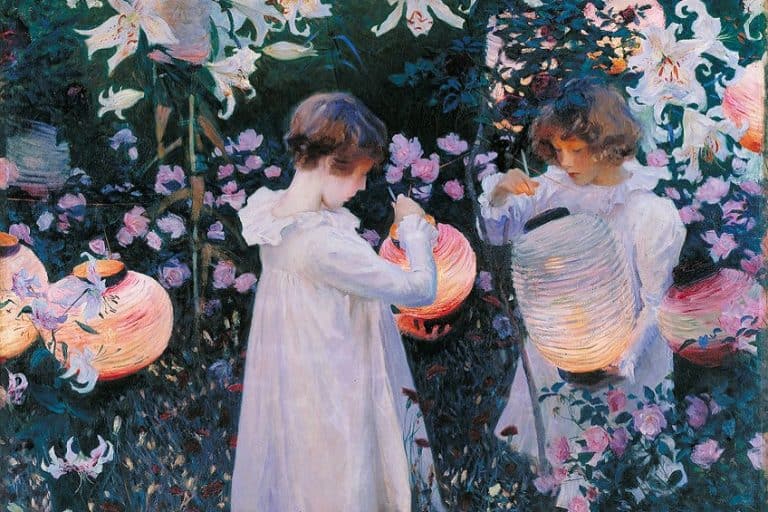Van Gogh Self-Portrait – Some of Van Gogh’s Most Famous Self-Portraits
Vincent van Gogh was from the Netherlands and is regarded as a very influential figure within the post-Impressionist movement. Vincent van Gogh’s self-portraits formed a large part of his output. Let us take a deeper look at this renowned artist as well as a few of his most famous self-portraits.
Van Gogh’s Self-portrait Paintings
Vincent van Gogh’s paintings are defined by vivid colors and expressive, impulsive, and emotive brushwork, which helped lay the groundwork for contemporary art. But which of his famous self-portraits are the most revered and where is the van Gogh self-portrait housed? We will answer these questions and more, but first, let us start with a brief introduction to the artist behind the self-portrait paintings.
Who Was Vincent van Gogh?
| Nationality | Dutch |
| Date of Birth | 30 March 1853 |
| Date of Death | 29 July 1890 |
| Place of Birth | Zundert, Netherlands |
Vincent Van Gogh, the legendary suffering artist, strived to communicate his spiritual and emotional condition in each of his creations. Despite the fact that he only sold one single piece of art during his lifetime, Van Gogh is now considered one of the most famous artists in the world. Van Gogh’s paintings, with thickly loaded, apparent brushstrokes presented in a brilliant, sumptuous palette, highlight his own personality brought to life in paint. Each picture conveys a clear sense of how the creator perceived each scenario, as seen through his vision, thoughts, and emotions.
This fundamentally distinctive, expressive style has influenced artists and groups throughout the 20th century and up to the present moment, ensuring Van Gogh’s prominence for the foreseeable future.

Van Gogh’s passion for conveying man’s and nature’s underlying spirituality culminated in a combination of style and substance that resulted in dramatic, inventive, repetitive, and emotive paintings that transmit far more than the subject’s plain look. Despite causing him great grief during his lifetime, Van Gogh’s mental condition supplied the frenetic basis for his emotive renditions of his environment, imbuing each painting with a deeper underlying psychological expression and significance. Van Gogh’s volatile personal temperament came to be associated with the romantic ideal of the anguished artist. His self-destructive genius was mirrored in the lives of countless artists during the 20th century.
Van Gogh expressed subjective feelings through an impetuous, expressive layering of paint and symbolic pigments. From Fauvism through Abstract Expressionism, these approaches and practices came to characterize many following contemporary movements.
A Look Into Van Gogh’s Paintings
We frequently hope to gain an understanding of Van Gogh’s character and thinking when we gaze at his self-portraits. This is why most of us are as enthralled by his unique life as we are by his incredible paintings. Vincent believed that portraiture (and, consequently, self-portraiture) could do what cameras could not. He loathed what was then a relatively new technical invention, which answers why we don’t have any images of him as an adult. “I personally still find photos dreadful and don’t want to have any, especially of people I know and love,” Vincent informed his sister Wil. In another instance, he informed her that “painting oneself isn’t easy,” but “one wants a deeper resemblance than that of the camera.”

The painter is examining his real self and showing a part of his life in several works, such as Self-portrait with Bandaged Ear (1889). Painted little under a month after mutilating his ear, he does not hide the anguish he has through. He might have shown the opposite side of his head or made the bandage less visible. Instead, the artist delivers a profoundly antagonistic image.
Its exact meaning must have been evident to Vincent, yet it remains enigmatic to us now. Is it a pleading for assistance? Is it, on the other hand, a symbol of his ambition to return to work? Maybe it’s both.
Van Gogh displays his talents as a painter in Self-portrait (1889), housed at the National Gallery of Art in Washington D.C. What is especially notable is his use of color, with his ginger hair contrasting with the corresponding blue attire and background. Due to a scarcity of models, Van Gogh created self-portraits on other occasions.
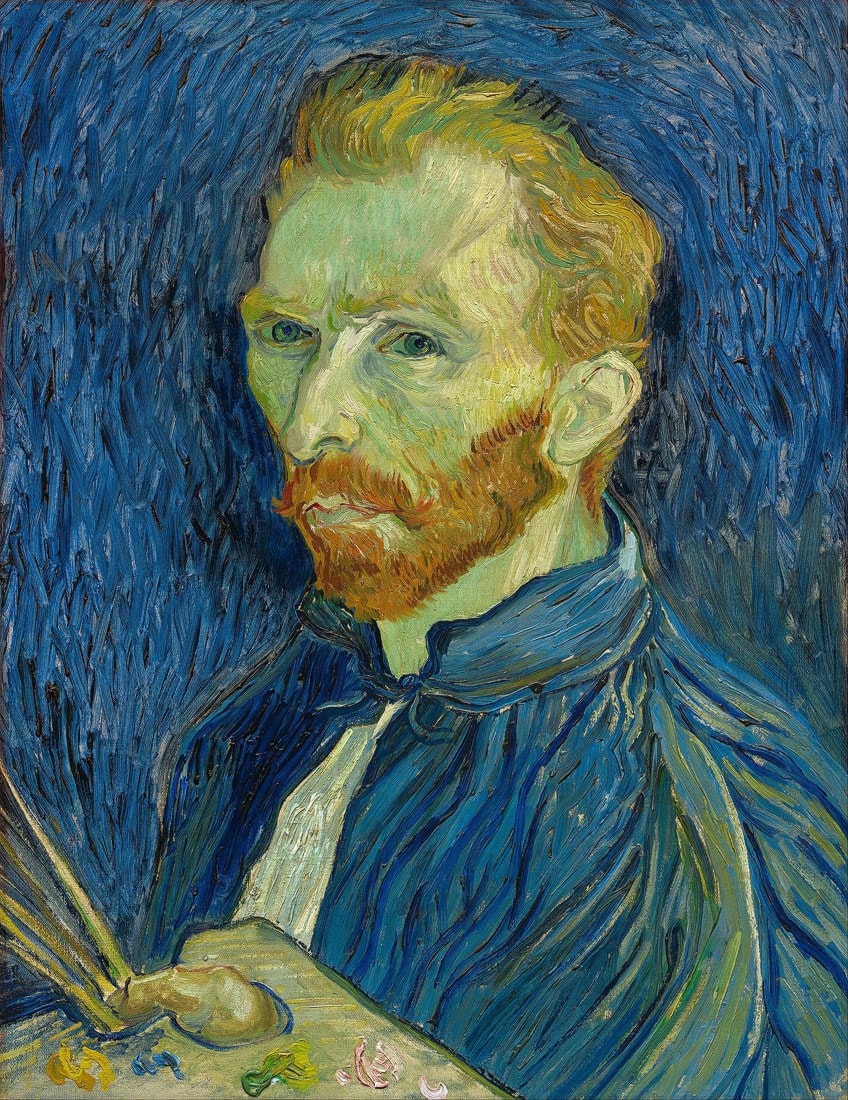
He had a terrible time getting individuals to sit for him, which was partly due to his uncomfortable nature. Van Gogh also appears to have disliked painting intimate family and friends. Without subjects, the simplest approach to hone one’s skills as a portrait painter is to paint oneself, which just involves the use of mirrors. “I’m concentrating on two self-portraits at the moment – for lack of another sitter – because it’s more than due that I did a little of figure painting,” he said to Theo from the institution in September of 1889. In other instances, he painted self-portraits to experiment with various technical techniques, such as color contrasts and brushwork. These less ambitious pieces were sometimes more of a study.
This reveals why the majority of his self-portraits are from his Paris period when he was exploring and perfecting his technique, changing from the gloomy hues of his Dutch days to the Van Gogh we recognize and appreciate today, with his vibrant colors. However, there are several excellent examples among the Paris self-portraits.
A Look at Some of Van Gogh’s Famous Self-Portraits
Van Gogh’s self-portraits were a significant portion of his oeuvre as a painter. Van Gogh’s self-portrait paintings most likely portray the face as it looked in the reflection, he used to duplicate his head, i.e., his right side of the painting actually represents the left side of his face. Although he created many of these self-portrait paintings, there are a few which stand out among his work.
Self-portrait with Grey Felt Hat (1887)
| Date Completed | 1887 |
| Medium | Oil on Canvas |
| Dimensions | 44 cm x 37 cm |
| Current Location | Van Gogh Museum |
Vincent van Gogh would very often use himself as his own sitter for practicing his figure painting. His self-portraits made in Paris provide good documentation of his painting experimentation. This one from fall 1887 has often been cited as proof of Van Gogh’s Neo-Impressionism influence. Artists such as Signac and Seurat developed a method termed pointillism or divisionism in which paint was applied consistently in small nearby dots. This, however, cannot be the circumstance.
In this self-portrait, there is no deliberate use of a particular, unifying manner of paint application.
The use of dispersed color dots in the backdrop, as well as the general reduction in the size of the brush marks, indicate a distinct method. The touch is separated according to pointillist procedures, but Van Gogh uses it in his own unique way. This touch is distinguished by its form and application: it consists of little commas applied in various directions.

Van Gogh used a different type of mark for each section of the work. These many, virtually visual mark systems are connected to the item or texture being depicted. Brushstrokes are directed in the handling of the face and head, following and so characterizing the planes and forms in order to express the form and proportion of the head or the roughness and development pattern of the facial hair.
Furthermore, the picture tells us about Van Gogh’s time in Paris.
Van Gogh as a city dweller is the impression he creates by showing himself in a stylish suit and hat. Van Gogh also explores color in this painting. Furthermore, the dispersion of the touch enables the artist to apply complementary colors next to each other to heighten their brilliance. Van Gogh uses orange accents to accentuate the blue background of the piece, mimicking the color of the creator’s beard. The hair, eyes, and felt cap are all fashioned with hints of reds and greens.
Van Gogh Self-Portrait (1889)
| Date Completed | 1889 |
| Medium | Oil on Canvas |
| Dimensions | 65 cm x 54 cm |
| Current Location | Musée d’Orsay, Paris |
This Vincent van Gogh self-portrait was one of around 30 he created over a period of 10 years, and they were an essential part of his works as an artist; he portrayed himself since he frequently lacked the funds to hire models. He then transported the piece to Auvers-Sur-Oise, and promptly took it to Dr. Paul Gachet, who referred to it as “absolutely fanatical.”
Art historians disagree on whether this or Self-portrait without beard (1889) is Van Gogh’s very last self-portrait. Jan Hulsker and Ingo F. Walther believe this is the last picture, with Hulsker believing it was created in Arles following Van Gogh’s hospitalization after disfiguring his ear, although Ronald Pickvance believes Self-portrait without beard (1889) was the latter work.

Van Gogh sent the painting to his younger sibling, the art collector Theo, along with a letter that read: “You’ll need to spend some time studying the image. I hope you see that my facial features have grown a lot calmer, even though my eyes still appear nervous, as they were previously.”
“The image is not a nice stance nor a realistic record, it is one that has witnessed too much peril, too much turbulence, to be able to keep its anxiety and quivering under control,” historians said.
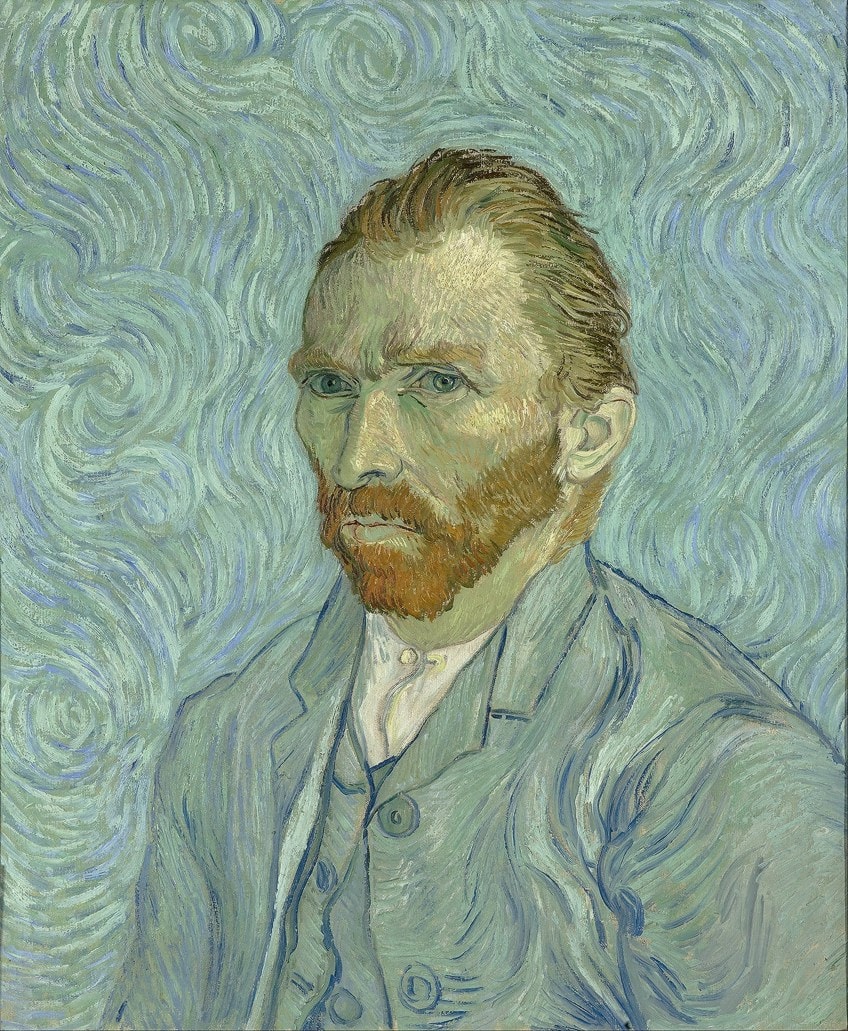
According to Beckett, the fading colors and tumultuous patterns indicate a sensation of strain and stress, symbolizing the artist’s cognitive, bodily, and emotional health. According to the Musée d’Orsay in Paris, who acquired the photograph in 1986, “the figure’s rigidity contrasts with the flowing beard and hair, reflected and magnified in the hallucinogenic arabesques of the backdrop.”
Another van Gogh self-portrait painting, known as the Oslo self-portrait (1889) since it is owned by the Nasjonalmuseet in Norway, was verified by the Van Gogh Museum in 2020. This artwork, which depicts the artist staring sideways, was created when he was in the institution in Saint-Rémy and is “unmistakably” his work.
Historians think it was created following Van Gogh’s letter of the 22nd of August, 1889, in which he stated that he was still “disturbed” but ready to resume working.
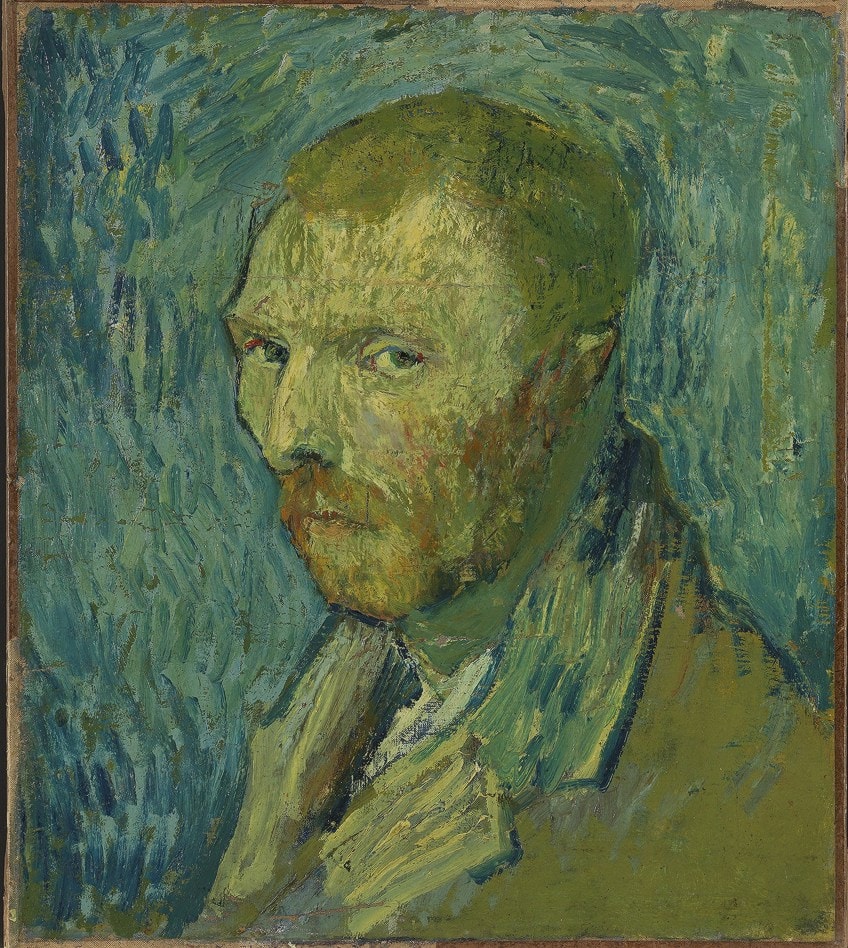
It was produced prior to Van Gogh’s letters of the 20th of September, 1889, in which he described the self-portrait as “an effort from when I was unwell.” According to the Museum’s assessment, “the Oslo self-portrait represents someone who is mentally unstable; his shy, side gaze is immediately recognized and is frequently observed in individuals suffering from melancholy and insanity.”
Self-Portrait in Front of the Easel (1888)
| Date Completed | 1888 |
| Medium | Oil on Canvas |
| Dimensions | 66 cm x 50 cm |
| Current Location | Van Gogh Gallery |
Vincent Van Gogh produced the Self-Portrait in Front of the Easel in January 1888 while in Paris. Van Gogh produced 35 self-portraits over his creative career, but the Self-Portrait in Front of an Easel stands out from the others. Van Gogh’s numerous self-portraits document various elements of his life and mental condition, although it was rare for the artist to portray himself in his vocation. Another example is his older piece, the Self-Portrait with Dark Felt Hat at the Easel.
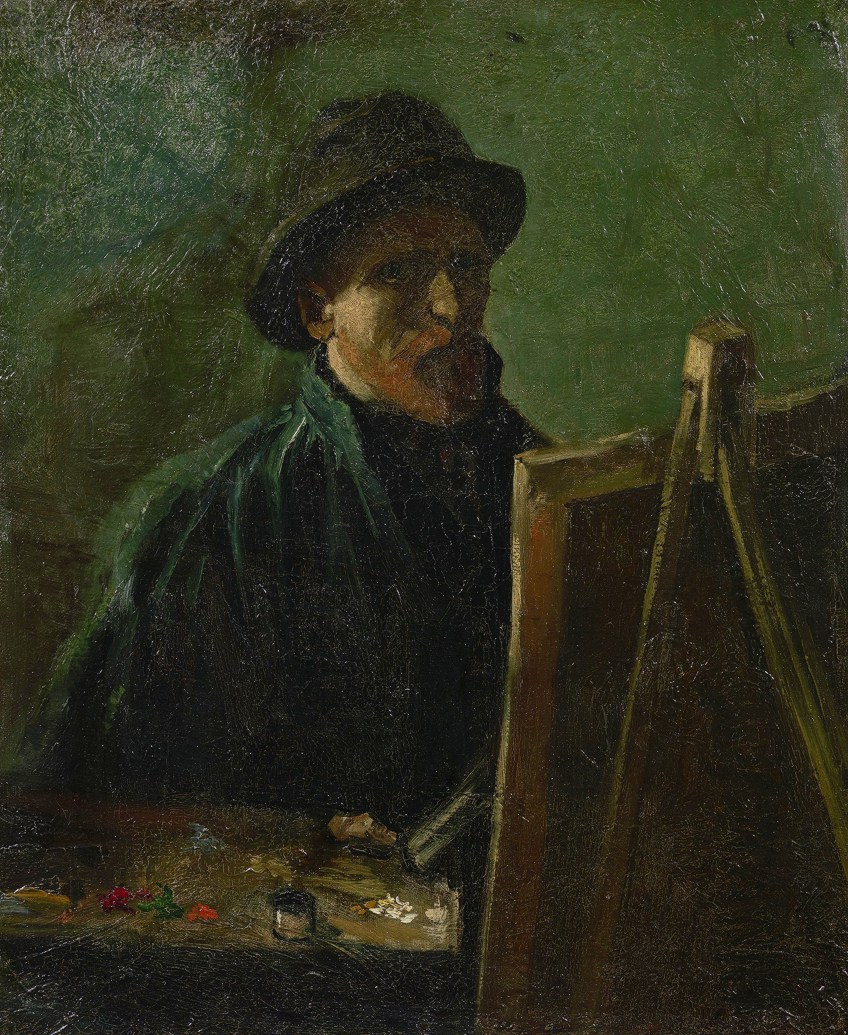
This older artwork was done in the classic Dutch style, using extremely dark earth-toned colors. During his time in Paris, Van Gogh encountered and was influenced by the founder of Pointillism, Georges Seurat. Van Gogh attempted to capture the method a few times, but his attempts to create paintings in this style were quite clumsy.
However, it was through these attempts that Van Gogh realized the benefits of using bright colors.
The striking and vivid colors of this self-portrait painting are considerably more characteristic of the artist’s other famous self-portraits than the dark earthy tones of the similar paintings of the same theme featuring the felt hat.
Van Gogh’s blue smock contrasts sharply with the orange and crimson tones of his beard near his left shoulder. Van Gogh’s use of color evolved further as he engaged with and was influenced by the Impressionist movement. The Impressionists favored the use of pure hues in their paintings, drawing on the colors of the rainbow. They avoided utilizing contrasting colors such as grays, browns, and blacks. Van Gogh’s self-portrait painting appears to have a gray shadow thrown across the artist’s face at first glance.
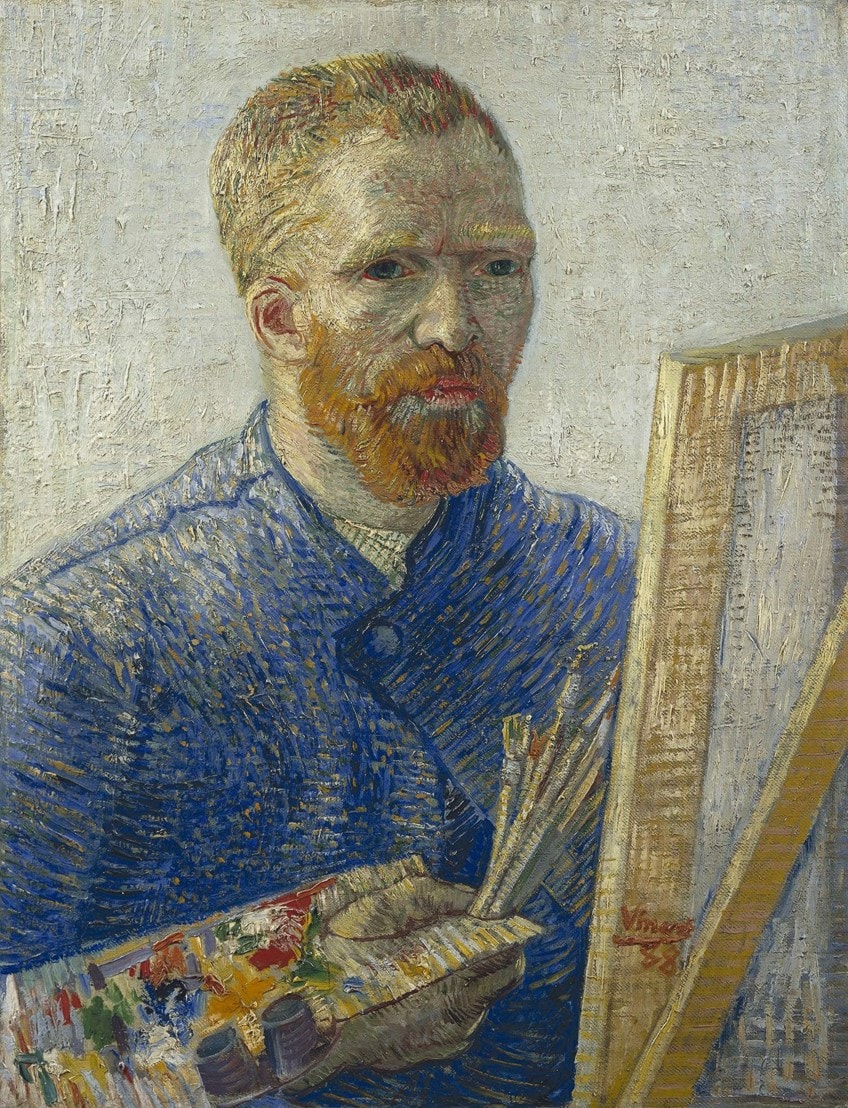
Closer investigation indicates that this gray color is made up of brushstrokes of red and green that, when combined, give the illusion of a gray shadow. Many of Van Gogh’s famous self-portraits have a ragged appearance. This self-portrait painting differs from many of the other van Gogh paintings in that it lacks the rough aspect of the others.
The brushstrokes look more deliberate and deliberate, leading many to conclude that Van Gogh devoted more time to this self-portrait than on most of the others.
Although the majority of Van Gogh’s self-portraits were uncredited, his name is clearly displayed on the easel, indicating the artist’s pleasure in this work, which is why this picture is also referred to as the Self-Portrait as a Painter.
Self-Portrait with Bandaged Ear (1889)
| Date Completed | 1889 |
| Medium | Oil on Canvas |
| Dimensions | 60 cm x 49 cm |
| Current Location | Courtauld Gallery, London |
Van Gogh is dressed in a blue hat with dark fur and a greenish cloak in this self-portrait, with a gauze concealing his ear and reaching below his chin. He’s in a three-quarter perspective, and his forward glance is somewhat to the right, and out of frame. Around him is a slightly opened window, presumably allowing in a wintery chill, and also a painting on an easel with a few unidentifiable strokes and a Japanese woodblock image. This print has been recognized as Geishas in a Landscape, which was released in the 1870s by Sato Tokyo.
This demonstrates the significant impact of Japonism and woodblock print on Van Gogh’s works, which can also be seen in the backdrop of other portraiture he produced.

The self-portrait painting is made out of impasto strokes that are predominantly vertical. This results in a texture that rises from the canvas and lends depth to the flat surface. The complexion tone is subdued, with greenish and yellow undertones. In this artwork, the gauze covering Van Gogh’s ear refers to his most famous battle.
Van Gogh utilized a reflection for his self-portraits, which goes some way to explain why there are people who believe he lost part of his right ear rather than his left.
Van Gogh relocated from Paris to Arles with the intention of establishing a society of artists who could support and inspire one another. He asked Paul Gauguin, a painter he had met in Paris, to reside with him. They were an acrimonious couple that quarreled frequently, sometimes violently.
During one of their disputes on the 23rd of December, 1888, Van Gogh had a seizure, threatening Gauguin with a knife, but then hurt himself, removing part of his left ear. In a frenzy, he took the fragmented lobe to the bordello Maison de Tolérance and handed it to a harlot called Rachel. When Gauguin returned the next morning, he learned that the police had come and that blood was smeared around the home. Van Gogh had cut a vein in his neck and was in critical condition as a result of the blood loss.

He was taken to the hospital, where he admitted to having no recall of what occurred during the fit. During his life, Van Gogh suffered from similar episodes, which were occasionally accompanied by intense paranoia. This van Gogh self-portrait was in the custody of Julien Tanguy at the time of Van Gogh’s death; however, it was unknown how he had got it. Tanguy sat for Van Gogh twice in 1887. It was shown at a major Van Gogh exhibition in Paris in 1901 and 1905. Samuel Courtauld bought it in 1928.
It is ordinarily housed at The Courtauld Gallery in London, but is presently on exhibit at The Van Gogh Museum in Amsterdam, Netherlands, while The Courtauld Gallery is shut for renovations. Some commentators view this picture as a forgery or a clumsy mash-up.
If this were accurate, it would have been created during a period in the 1890s when it would not have been lucrative, as the painter would have died only a few years previously and had only sold a few pieces throughout his career. Vincent had spoken to his brother Theo on the 17th of January, 1889, noting that he had finished “another fresh self-picture.” There has been some debate as to whether this was referring to Self Portrait with Bandaged Ear and Pipe or Self Portrait with Bandaged Ear. Van Gogh is wearing the same clothes and sitting in the same stance in each of these photographs, albeit the color palettes, accessories, and locales vary.
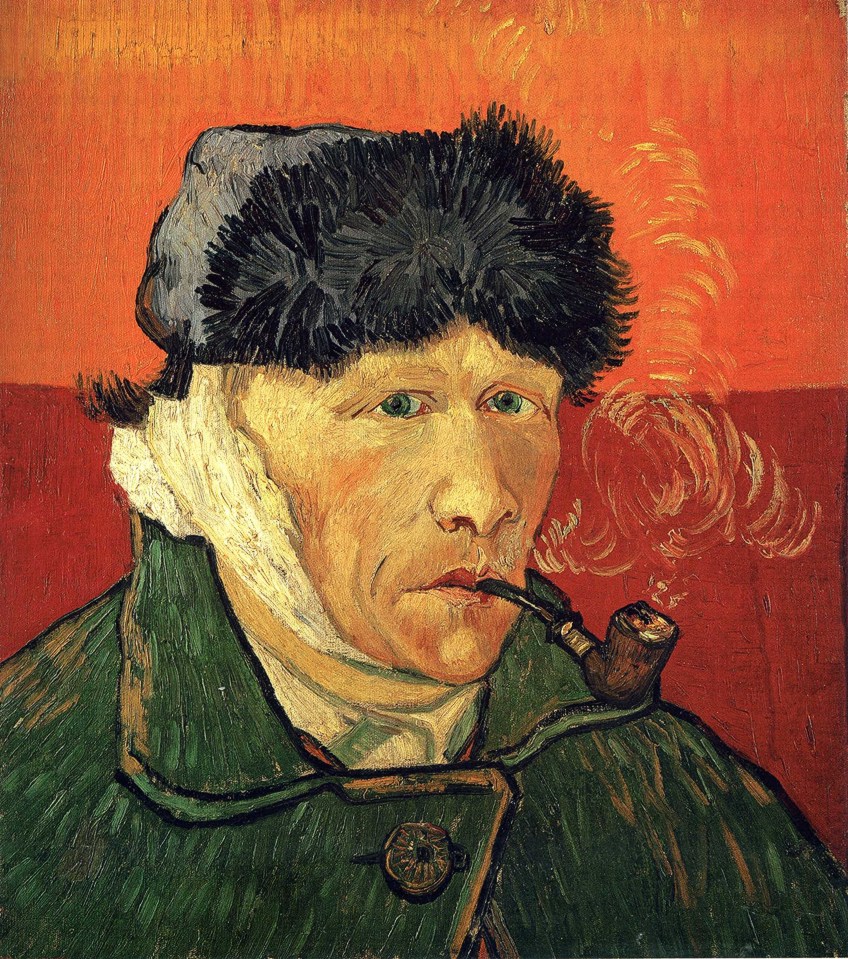
We hope you have enjoyed our look at the various van Gogh self-portraits. Vincent van Gogh was from the Netherlands and is regarded as a very influential figure within the post-Impressionist movement. Vincent van Gogh’s self-portraits formed a large part of his output. We have taken a look at this renowned artist, as well as some of his most famous self-portraits.
Frequently Asked Questions
Why Did Vincent van Gogh Make So Many Self-portraits?
He had a challenging difficulty persuading people to sit for him, which was largely owing to his uneasy demeanor. Van Gogh also appears to have despised painting close relatives and acquaintances. Without subjects, the most basic way to enhance one’s talents as a portrait painter is to paint oneself, which just requires the use of mirrors. “I’m working on two self-portraits right now – for lack of another subject – since it’s long overdue that I did a little figure painting,” he says.
Where Is the van Gogh Self-Portrait Located?
The answer to that question depends on which of van Gogh’s paintings you are referring to. Van Gogh made many famous self-portraits. Depending on which one you would like to view, there are multiple places where one can go to view a Van Gogh self-portrait. Many of his paintings can be found in the van Gogh Museum. Self-Portrait with Bandaged Ear (1889) is currently housed at the Courtauld Gallery in London. His Van Gogh Self-portrait (1889) can be found at the Musée d’Orsay in Paris.
Isabella studied at the University of Cape Town in South Africa and graduated with a Bachelor of Arts majoring in English Literature & Language and Psychology. Throughout her undergraduate years, she took Art History as an additional subject and absolutely loved it. Building on from her art history knowledge that began in high school, art has always been a particular area of fascination for her. From learning about artworks previously unknown to her, or sharpening her existing understanding of specific works, the ability to continue learning within this interesting sphere excites her greatly.
Her focal points of interest in art history encompass profiling specific artists and art movements, as it is these areas where she is able to really dig deep into the rich narrative of the art world. Additionally, she particularly enjoys exploring the different artistic styles of the 20th century, as well as the important impact that female artists have had on the development of art history.
Learn more about Isabella Meyer and the Art in Context Team.
Cite this Article
Isabella, Meyer, “Van Gogh Self-Portrait – Some of Van Gogh’s Most Famous Self-Portraits.” Art in Context. January 10, 2022. URL: https://artincontext.org/van-gogh-self-portrait/
Meyer, I. (2022, 10 January). Van Gogh Self-Portrait – Some of Van Gogh’s Most Famous Self-Portraits. Art in Context. https://artincontext.org/van-gogh-self-portrait/
Meyer, Isabella. “Van Gogh Self-Portrait – Some of Van Gogh’s Most Famous Self-Portraits.” Art in Context, January 10, 2022. https://artincontext.org/van-gogh-self-portrait/.


